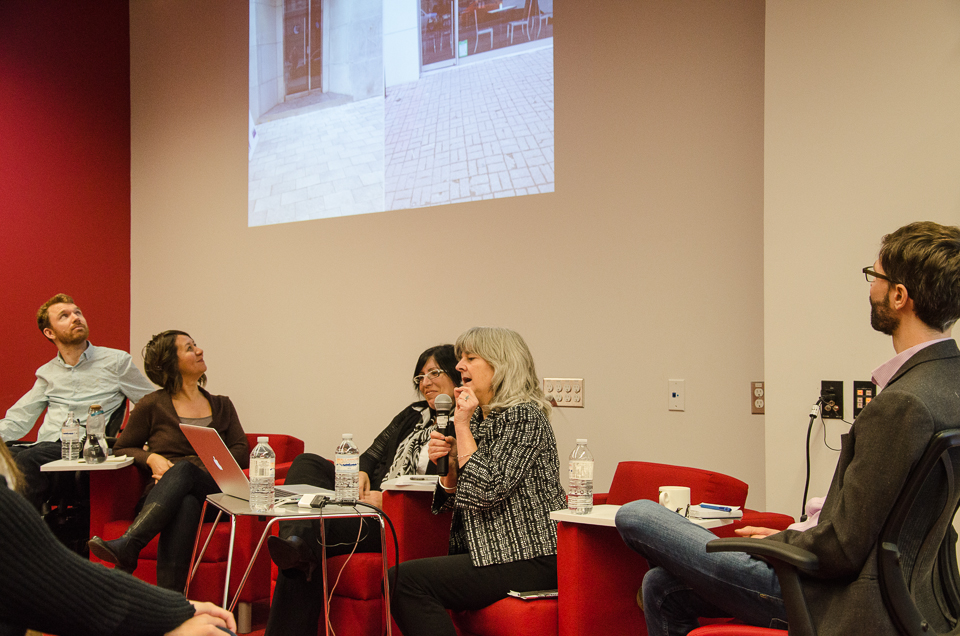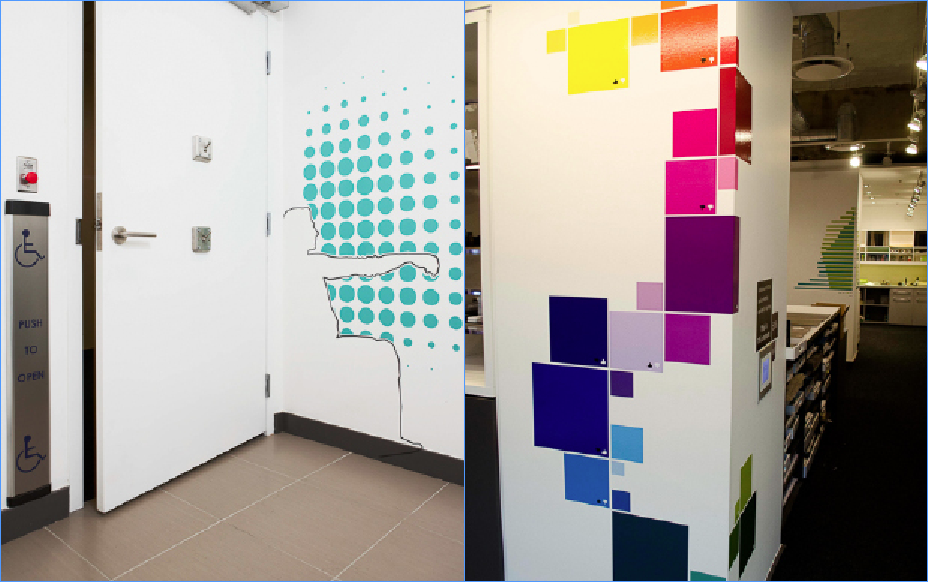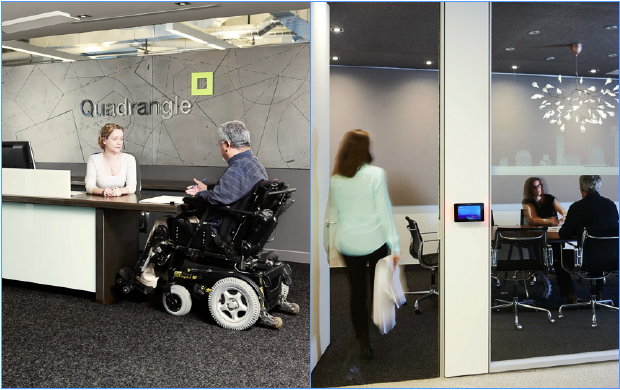(this is an article I wrote for UrbanToronto) The term ‘diversity’ in its cultural sense is frequently referred to in Toronto but it encompasses a much broader range with respect to language, gender and age, including people with disabilities and special needs. The Inclusive Design Institute (IDI) at OCAD University, Canada’s first research hub focused on digital inclusion, designs information and communication systems to work with all potential users. It hosted a panel discussion entitled Traverse – Stories from the Built Environment that brought together speakers in multidisciplinary fields to share their perspectives and present examples of accessibility in such areas as: architectural design, transportation, environmental policy, legislation, and computer technology.
Vancouver's recent ban on doorknobs in new construction in favour of easier-to-manoeuvre lever handles is a progressive move in the broader discussion of inclusion. Removing barriers in our built environment doesn’t just help those with disabilities but improves the standard of living for all. Curb cuts are a frequent analogy of ‘universally accessible’ design. Not only for those in wheelchairs, they are better for the elderly, for people with strollers, or those bearing groceries. The IDI makes a distinction between Universal and Inclusive Design: the former has its origins in architecture and industrial design and is linked to a fairly constrained categorization of disabilities. Inclusive design, on the other hand, takes everyone into account. It recognizes commonly ignored non-visible disabilities, such as cognitive impairment or environmental illnesses.
Accessibility has a certain stigma about it. It is oftentimes associated with ‘static’ design but those notions are being challenged. When Quadrangle Architects relocated to a new space, they conceived a fully accessible office that showcases how universal design can be beautiful and creative. Panellist Susan Ruptash, the firm’s Managing Principal, illustrated some of its features: easily adaptable modular furniture systems; generously-sized rooms and corridors; and, a single-use universal toilet room with the silhouette of a person in a mobility device and dots in decreasing size to indicate the reach range (below left). The firm cleverly uses graphics as a way to educate its own staff on clear floor space requirements and colour contrast minimums (below right). “The graphics are a bit esoteric and we like their storytelling aspect – they become an opportunity for conversation,” says Ruptash.
Full-glass panels are demarcated with vision strips (below right) that integrate profiles of building projects and corporate branding which the firm saw as a way to “show our clients how it can enhance the design of space and not be seen as a limitation.” Because people perceive space in a number of different ways, the architects also incorporated theories of wayfinding in the office’s layout using varying colours, materials, and textures.
Quadrangle sees advocating for a more accessible world as one of its key roles. It espouses the philosophy that integrating universal design from the beginning results in a far better outcome than modifying existing space, which is more costly and often results in inferior design.
Panellist Luke Anderson – a paraplegic himself – has experienced more barriers than most. The professional engineer has taken on the challenge to change the environment of ordinary life, and is gradually doing so through the work of StopGap, a non-profit company he co-founded. Its most recent initiative, The Ramp Project, provides retrofit ramps in various sizes and colours to make existing structures – those burdened with a curb – immediately accessible. Because it is not permanent, the ramp is not required to meet the requirements of the Building Code. It is a low-cost, low-tech makeshift solution to a problem and even comes with assemble-it-yourself instructions. Now launched in 12 communities across the country, these ramps are being snapped up by shop owners eager to make their businesses more welcoming to all. And the bright colours definitely draw attention. It is an initiative – not a protest – and as much about raising awareness of the barriers as improving access to individual buildings. Retrofitting later is more costly.
And the barriers extend beyond the built environment. Our physical and digital worlds are increasingly merging. The IDI and its offshoot Inclusive Design Research Centre (IDRC) create products, software, and adaptive technology that support inclusion. They see disability as a “mismatch between the needs of the individual and the user interface." Accessibility, then, is the adaptability of the system to the needs of all.
Despite what we might think, the majority of us are not ‘typical’ or ‘average.’ While Universal Design creates a common design that works for everyone, Inclusive Design seeks to accommodate the needs of each individual and the digital realm gives designers the freedom to do just that. It is a one-size-fits-one approach instead of one-size-fits all. Jutta Treviranus, the institutes’ Director, describes how they are “working on a way to deliver to everyone something that is personalized – what you need, how you need it, when you need it.” She has played a leading role in developing accessibility legislation, standards and specifications internationally. The IDRC designs broadly implemented innovations and technology such as Tecla, a bluetooth box for mobility impaired mobile phone users. To learn about these, and find more open resources promoting accessible information and communication, visit http://idrc.ocad.ca/.
The discussion not only brought exposure to issues of inclusion but it also reinforced how real value comes from the conversations that designers have with each other and the need for ongoing collaboration. Using principles of inclusive design, we can create attractive designs that are AODA compliant and user-friendly, allowing everyone the opportunity to participate.
IN Series is a series of public presentations and events on a wide variety of topics from the engaging and thought provoking field of Inclusion: Accessibility, Health, Education, Art, Culture and Design hosted by the Inclusive Design Institute (IDI), at OCAD University. The IDI is a hub of applied research that addresses the challenge of design that is inclusive of the full range of human diversity with respect to ability, language, culture, gender and age, including users with disabilities, language needs and various cultural preferences.





